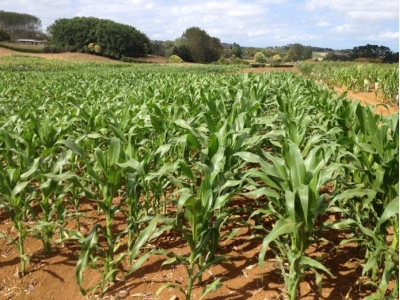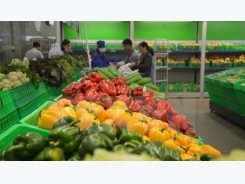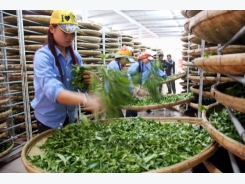Whats next for agricultural biologicals

Achieving higher yields
Agricultural biologicals are putting crops, and the entire crop input market, on the fast track for growth. These natural products work alongside a plant’s own defense mechanisms to ward off pests, fight environmental stressors and utilize nutrients, and they can do it in a way that doesn’t pose the same perceived risks as synthetic chemicals.
As a result, many traditional crop protection companies are jumping onboard to find a place for these natural products in their product lineups.
Biologicals are capturing wider attention
Perhaps last month’s Wired article “Good Riddance, Chemicals: Microbes Are Farming’s Hot New Pesticides” said it best, as author Sarah Zhang writes:
“Whether pesticides or growth stimulants, carefully-designed, naturally-derived products are the current agricultural darlings, attracting both startups and heavyweights like Monsanto, Bayer, and DuPont by the billions of dollars."
It's a topic Farm Industry News has long covered, and one that continues to evolve.
Biologicals, which made up less than 1% of the $43 billion global pesticide market in 2014, are expected to grow to $4.5 billion by 2019, at a calculated average growth rate of 15.3%, according to the latest market estimates. Of this market, microbials, or microorganisms in the soil, are the fastest growing segment, growing at five to seven times the rate of conventional pesticides.
The Advanced Microbial Selection process (now patented)
Marcus Meadows-Smith is an expert in this market segment. He is the CEO of BioConsortia, an agricultural biotech company known for a novel research platform called Advanced Microbial Selection (AMS), which uses directed selection to discover beneficial teams of microbes that aid in crop growth. Check out “Next-step tech offers novel yield-boosting approach”
The process works by characterizing the biological agents in soil that are beneficial to the plant and working to enhance that availability for the future - in a controlled fashion.

A closer look at bioconsortia
The company received a patent for the technology last October and is pursuing a number of independent projects on solutions for select crops and traits while also working in collaboration with other organizations on specified projects. In this image, photomicroscopy shows a potential new BioConsortia product for increasing yields in drought conditions.
Prior to that, Meadows-Smith worked for Bayer, heading up their biologics business globally, AgraQuest, as its CEO, and prior to that, Chemtura as EVP for $2 billion in agro and specialty chemicals businesses.
Meadows-Smith was a panelist at the 2014 Ag Innovation Showcase, speaking on the topic of biologicals, which we later featured in the story, “Beyond GMOs: A new era of biotechnology.”
Recently, Farm Industry News had the chance to meet with Meadows-Smith again, along with his colleague Jon Amdursky, to get an overview of the biologicals market and where they think it is headed, especially with regard to the segment of microbials.
“We went to Monsanto’s BioAg microbial meeting this morning, and the room was packed,” says Meadows-Smith, after attending the Commodity Classic trade show in New Orleans. “There were 600 seats and all of them were full, so clearly there is a lot of excitement in the grower community to understand microbials and how they can improve the crop.”
An industry just eight years ago
Meadows-Smith says prior to 2008, biologicals, with the exception of Bt, were not considered an exact science. “Growers thought of biologicals as less effective [than conventional pesticides], inconsistent, and hard to use,” he says. “As a result the market remained relatively small, accounting for $1 billion in the $35 billion agrochemical market.
The market grew in 2008 as a result of several factors which Meadows-Smith calls “macro drivers.” They included consumer pressure to reduce pesticide residues, regulatory pressure to de-list conventional pesticides and resistance issues resulting from an overuse of the same pesticide chemistries.
“These macro drivers are why I moved from Chemtura, a multi-billion dollar chemical company, to running AgraQuest,” he says. AgraQuest, a biotech company now owned by Bayer, specialized in biological and low-chemical pest-control products and marketed its technology to agrochemical companies including Bayer, Pfizer, DuPont, and Monsanto.
“At AgraQuest, we changed our strategy by showing mainstream ag companies how to use chemicals and microbials in combination to get better yields and consistency in efficacy,” he says.
The evolution of the biologicals market
Meadows-Smith says it was around 2008 when agrochemical companies began to invest in biologicals, accelerating the growth of the market, and, by 2012, companies started to establish their own pipeline of products through buyouts of biologics providers, a trend that started with Bayer’s purchase of AgraQuest. (Meadows-Smith showed us a graphic of the companies that are left.)
“We went from an industry made up of a lot of small players to, in 2012, one that was dominated by a few large agrochemical companies when AgraQuest was bought by Bayer, and Becker-Underwood was purchased by BASF,” he says. “We had been supplying products to those companies, and now they wanted their own company and their own pipeline.”
Meadows-Smith says that while the agricultural biologicals market started in biological pest control or “biopesticides,” future growth will likely come from the areas of nutrient use efficiency and stress tolerance.
“I believe that what is categorized as bio-stimulants or bio-fertilizers and bio-yield will become the bigger categories,” Meadows-Smith says. “That is where the game changes are going to come from.”
He says Koch Fertilizer’s recent purchase of Mendel Plant Sciences, and, more recent distribution deal with Pathway BioLogic, maker of biostimulants, is evidence that the market is moving in a new direction.

A focus on nutrient efficiency
He says many of the macro drivers that were present in 2008, but increased focus on fertilizer and nitrate runoff, are driving this new area of nutrient use efficiency.
“Fertilizer and nitrates in groundwater remain a problem in many parts of the world,” he says. “For example, New Zealand and some European countries have limited the amount of fertilizer put on land, and growers have to prove how much is needed so the fertilizer isn’t leeching and running into streams or evaporating in the atmosphere.”
A more recent driver is climate volatility. “We are seeing an increased frequency with droughts, floods, and cold, wet springs,” he says. “Rather than developing hybrids that go through the process of genetic modification or breeding, we can fast-track that by finding microbes that tell a plant how to tolerate drought so they work in a symbiotic relationship. This is an area where we see a very big growth potential.”
He expects that fertilizer use efficiency, in particular could be a $10 million market, far surpassing the current numbers for bio-stimulants and bio-pesticides.
Research work in progress
BioConsortia is working in partnership with seed and chemical companies to develop products using its AMS research platform. The products will come in the form of seed treatments or liquid, granular, sidedress or in-furrow formulations and will be marketed through seed and chemical distributors. In this image, Meadows-Smith - center - gathers with his Davis, California, research and development team to view potential product discovery.
“It’s an exciting time in the industry for various reasons,” he says. “We are doing work in in-furrow where microbes can be used in areas facing cold and wet starts or drought, for example.
He says products in the pipeline include biostimulants, biofungicides and products for corn rootworm and nematodes.
“We saw exciting results last year, with some double-digit improvements in crop growth,” he says. “This year we are doing more work in corn, soy, wheat and sorghum, as well as new work in tomatoes and other vegetables.”“We’re still in the early stages of development,” he adds. “But we expect the market potential for these types of products will blow away the numbers we saw with biopesticides.”
Có thể bạn quan tâm
Phần mềm

Phối trộn thức ăn chăn nuôi

Pha dung dịch thủy canh

Định mức cho tôm ăn

Phối trộn phân bón NPK

Xác định tỷ lệ tôm sống

Chuyển đổi đơn vị phân bón

Xác định công suất sục khí

Chuyển đổi đơn vị tôm

Tính diện tích nhà kính

Tính thể tích ao hồ




 Techno-culture in Farming
Techno-culture in Farming  Vietnam boosts Agriculture 4.0
Vietnam boosts Agriculture 4.0